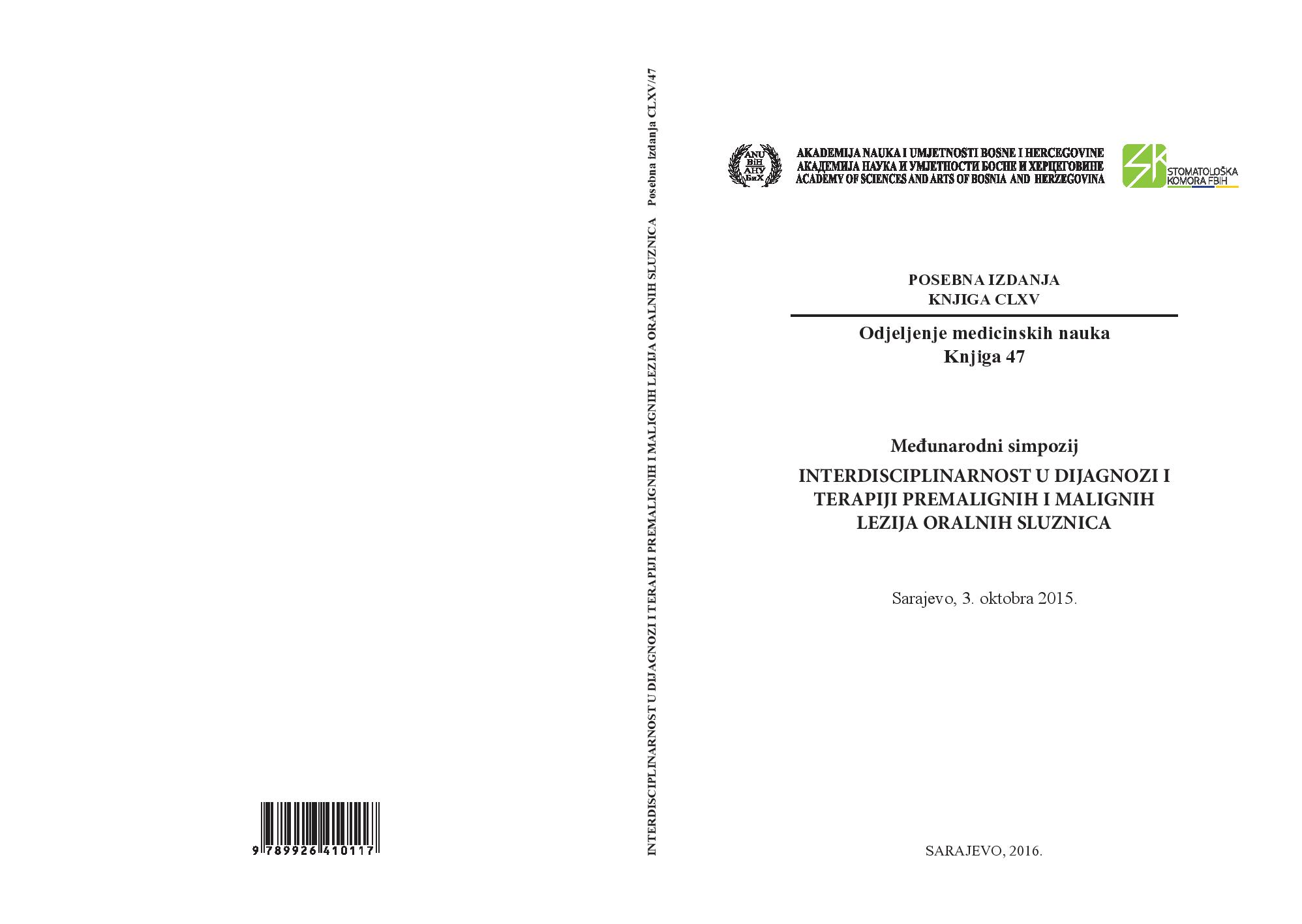NEUROVASKULARNI INFRAHIOIDNI REŽANJ ZA VOLJNU KONTRAKCIJU JEZIKA
NEUROVASCULAR INFRAHYOID FLAP FOR WILLING
TONGUE CONTRACTION
Author(s): Tarik Mašić, Ivor LincenderSubject(s): Health and medicine and law
Published by: Akademija Nauka i Umjetnosti Bosne i Hercegovine
Keywords: oral cancer; infrahyoid flap; tongue reconstruction ;
Summary/Abstract: Introduction: surgical treatment of oral cancer and its organs may lead to extended functional failures, depending of the location and size of the incurred postoperative defect. During total and subtotal glossectomy, and even after sophisticated plastic and reconstructive interventions, swallowing disorders may occur. The use of neurovascular infrahyoid flap significantly improves the reconstruction quality of the oropharingal cavity and tongue defects, which as the most dominant organ fills out the oral cavity. The aim of this study was to show the application of infrahyoid flap modification in primary reconstruction of the tongue defects,basal oral cavity, and supraglottic space, achieving satisfying functional results.Materials and methods: the study included ten patients and was conducted in the period from October 2013 to March 2015. Seven cases related to squamous cell carcinoma on the side of the tongue with propagation towards the tongue root and oral cavity basis, whereas three cases related to the confirmed tongue root carcinoma with propagation towards epiglottis and lateral pharyngeal wall. All patients underwent identical preoperative and operative protocol which implied excision of tumors, ipsilateral radical dissection, contralateral supraomohyoidneck dissection, and primary reconstruction of the defect by infrahyoid neuromyocutaneousfl ap. Vascularisation of the flap was made by the microvascularend to end anastomosis of the upper thyroid vein on the ipsilateral side with the upper thyroid vein on the contralateral side. Discussion and conclusion: the willing flap innervations using an anse cervicalis enables adequate phonation and swallowing, and prevents scarring and atrophies of the reconstructed tongue.
Journal: Posebna izdanja Akademije nauka i umjetnosti BiH
- Issue Year: 2016
- Issue No: 3
- Page Range: 103-115
- Page Count: 13
- Language: Bosnian

